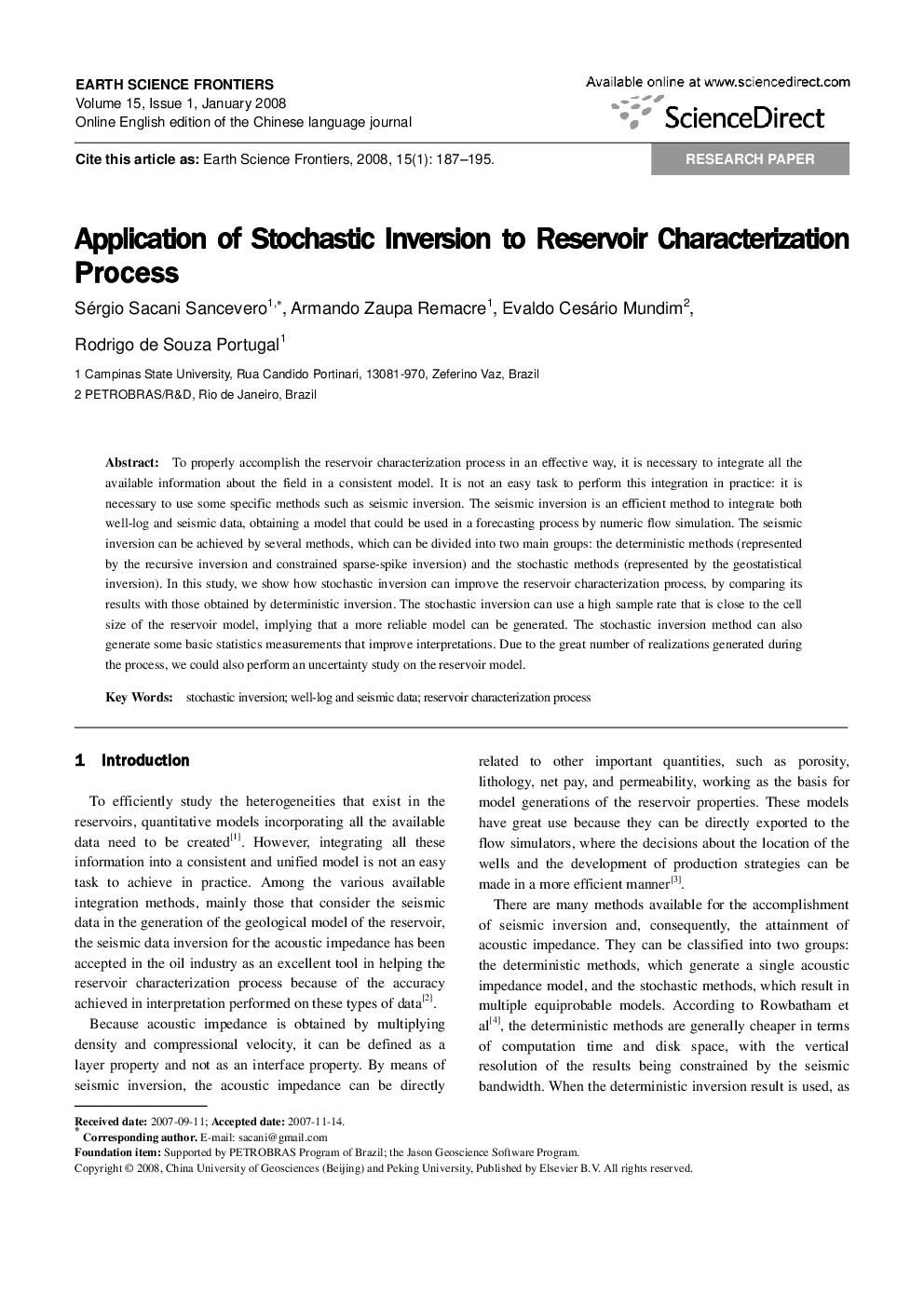| کد مقاله | کد نشریه | سال انتشار | مقاله انگلیسی | نسخه تمام متن |
|---|---|---|---|---|
| 4701563 | 1352715 | 2008 | 9 صفحه PDF | دانلود رایگان |

To properly accomplish the reservoir characterization process in an effective way, it is necessary to integrate all the available information about the field in a consistent model. It is not an easy task to perform this integration in practice: it is necessary to use some specific methods such as seismic inversion. The seismic inversion is an efficient method to integrate both well-log and seismic data, obtaining a model that could be used in a forecasting process by numeric flow simulation. The seismic inversion can be achieved by several methods, which can be divided into two main groups: the deterministic methods (represented by the recursive inversion and constrained sparse-spike inversion) and the stochastic methods (represented by the geostatistical inversion). In this study, we show how stochastic inversion can improve the reservoir characterization process, by comparing its results with those obtained by deterministic inversion. The stochastic inversion can use a high sample rate that is close to the cell size of the reservoir model, implying that a more reliable model can be generated. The stochastic inversion method can also generate some basic statistics measurements that improve interpretations. Due to the great number of realizations generated during the process, we could also perform an uncertainty study on the reservoir model.
Journal: Earth Science Frontiers - Volume 15, Issue 1, January 2008, Pages 187-195